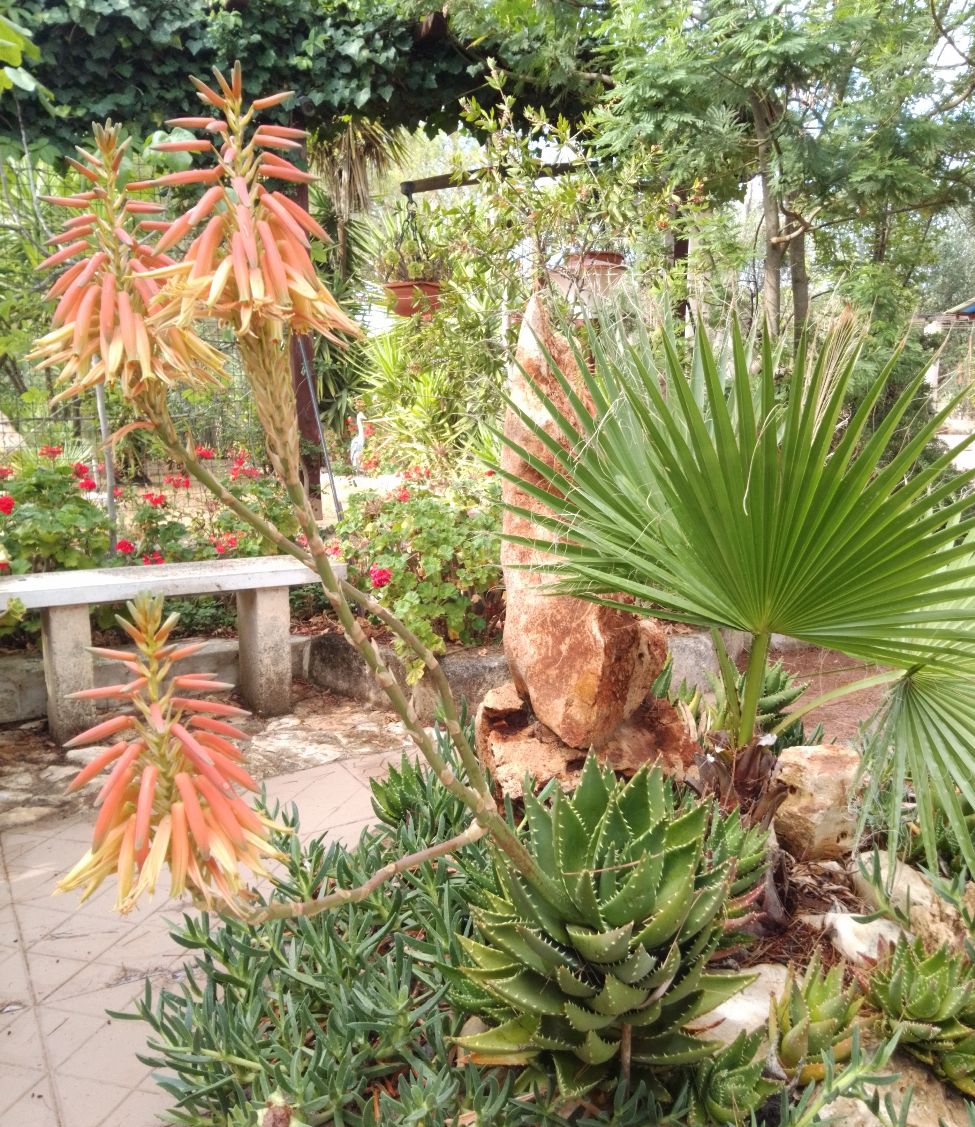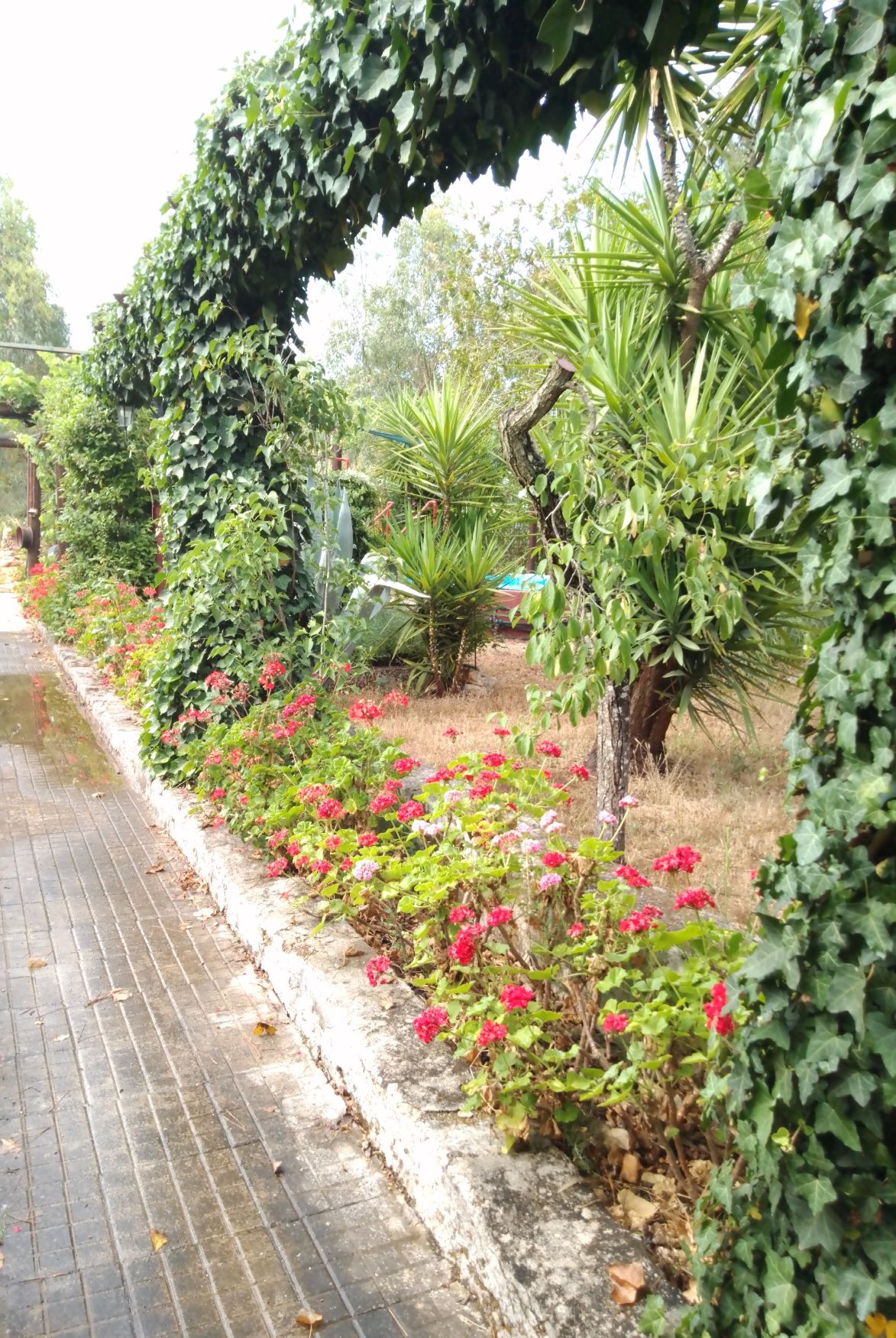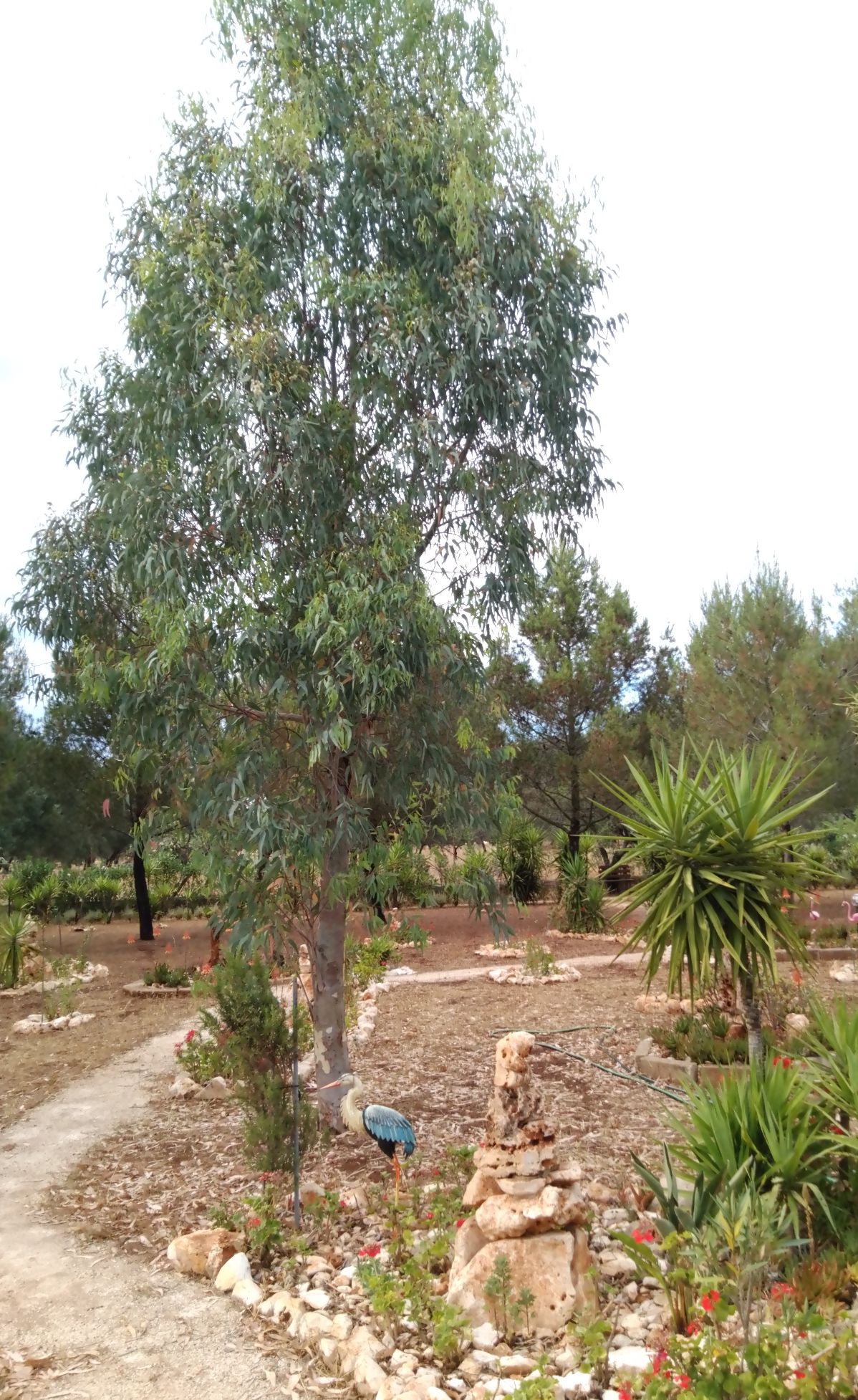In 14 years I've tried a lot, I've succeeded a lot, a lot has failed.
The garden is primarily an ornamental garden, a "park" in the making.
Conditions and measures
The
soil layer is only about 30 cm. Below are massive limestone cliffs,
in which holes can only be drilled with heavy equipment.
Extensive rain falls only in the months of October to April. From
mid-May to early September there is practically no precipitation.
There can be strong thunderstorms with lots of rain during this
time. After an hour the sun bangs mercilessly again and the
temperatures rise again to at least 30 degrees.
In the summer, the plants either need to be watered continuously or
they have dug their roots into the limestone strata over the course
of about two years. The limestone stores the rain so that the plants
can survive the summer with the help of the water stored in the
limestone. But the two years, many newly planted shrubs and trees
need irrigation support. Exceptions are the plants that store water
(see below).
In summer it gets so dry that the ground cracks and cracks.




